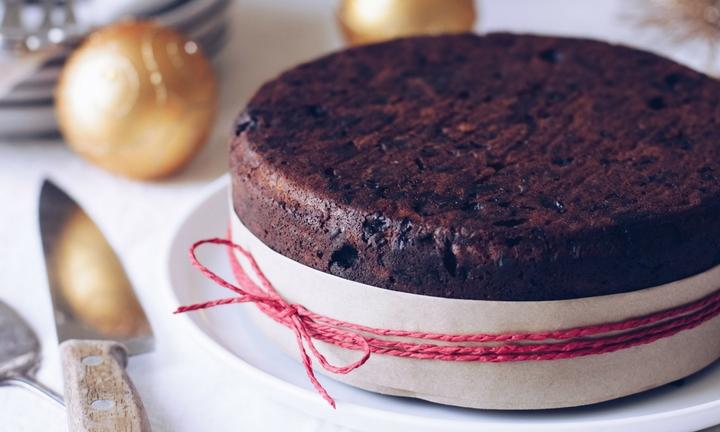
England's Traditional Christmas Cake Recipe
English Christmas Cake
There is one tradition that many households share for Christmas and that’s the European Christmas Cake. We have found the best recipe for you to try this year.
The Christmas cake is an English tradition that began as plum porridge way back in the 15th century. People ate the porridge on Christmas Eve, using it to line their stomachs after a day of fasting. Soon dried fruit, spices and honey were added to the porridge mixture, and eventually it turned into Christmas pudding and by the 16th century the flour, butter and eggs were added to create the Christmas cake we know and love today.
Ingredients
- 3 1/2 cups currants
- 1 1/2 cups sultanas
- 1 1/2 cups raisins
- 3/4 cup candied peel (finely chopped)
- 1 cup glace cherries (halved)
- 3 1/3 cups plain flour
- Pinch salt
- 1/2 level teaspoon mixed spice
- 1/2 level teaspoon ground cinnamon
- 1/2 level teaspoon freshly ground nutmeg
- 300g butter (slightly softened)
- 1 1/3 cups soft brown sugar
- 1/2 lemon (zested)
- 6 large eggs (lightly beaten)
- 3 tablespoons brandy (plus extra for feeding)
Method
Preheat the oven to 150 C. The temperature is low, as the cake needs a long, slow bake. It is packed with sugars, fruits, and brandy, and if the temperature is any higher, the outside of the cake will burn and the inside will be undercooked.
Line a 9-inch cake tin with 2 layers of greaseproof paper. Tie a double band of brown or newspaper paper around the outside. This acts as an insulator and to prevent the cake from burning on the outside.
In a large mixing bowl mix the currants, sultanas, raisins, peel, and cherries with the flour, salt, and spices.
In a separate large bowl cream the butter with the sugar until light and fluffy. Stir in the lemon zest. Add the beaten eggs to the butter mixture a little bit at a time, beating well after each addition - do not try to rush this process as the mixture could curdle. If it does curdle simply add a tablespoon of flour and mix again, this should bring the mixture back together. If it doesn't come back together, don't fret, the cake will still be delicious.
Carefully fold in half the flour and fruit into the egg and butter mixture, once incorporated repeat with the remaining flour and fruit. Finally, add the brandy.
Spoon the cake mixture into the prepared cake tin making sure there are no air pockets. Once filled smooth the surface with the back of a spoon and make a slight dip in the centre (this will rise back up again during cooking and create a smooth surface if you want to ice the cake).
Baking the cake
Finally, using a piece of paper towel clean up any smears of cake batter on the greaseproof wrapping. If left on they will burn, and though it won't affect the cake, it doesn't smell too good.
Stand the tin on a double layer of newspaper in the lower part of the oven. If you have a gas oven, ensure the paper is well away from any flame. Bake for 4 1/2 hours. If the cake is browning too rapidly, cover the tin with a double layer of greaseproof paper after 2 1/2 hours. During the cooking time avoid opening the oven door too often as this may cause the cake to collapse.
After 4 1/2 hours check that the cake is cooked. The cake should be nicely risen and a deep brown all over. Insert a skewer or fine knife into the centre of the cake. If there is sticky dough on the skewer when you pull it out it needs cooking longer, if it is clean, the cake's done and remove from the oven.
Leave the cake to cool in the tin on a wire rack for an hour, then remove from the tin and leave to cool completely. Once cooled prick the surface of the cake with a fine metal skewer and slowly pour over 2 to 3 tablespoons brandy. This feeding should be repeated every two weeks up until Christmas.
The cake should be stored wrapped in greaseproof or parchment paper in an airtight tin, until ready to serve. Enjoy!
Recipe courtesy of Elaine Lemm of the Spruce Eats.
The Slow Tours team enjoys sharing the history and culture of Europe just as much as we enjoy our Tours in Europe!.
Explore our huge range of Tours in Europe on our website.